#Jan Griffier I
Text

A Turkey and Other Fowl in a Park, Jan Griffier I, 1710
#Thanksgiving#art#art history#Jan Griffier I#animals in art#turkey#turkeys#fowl#birds#Dutch Golden Age#Baroque#Baroque art#Dutch Baroque#British Baroque#Dutch art#Anglo-Dutch art#18th century art#Tate Gallery#oil on canvas
135 notes
·
View notes
Text

Dutch Snow Scene with Skaters
Jan Griffier I (c.1652–1718)
Merchant Adventurers’ Hall
120 notes
·
View notes
Text

Dutch Snow Scene with Skaters: Jan Griffier I, c.1695.
Merchant Adventurers’ Hall, York.
44 notes
·
View notes
Photo
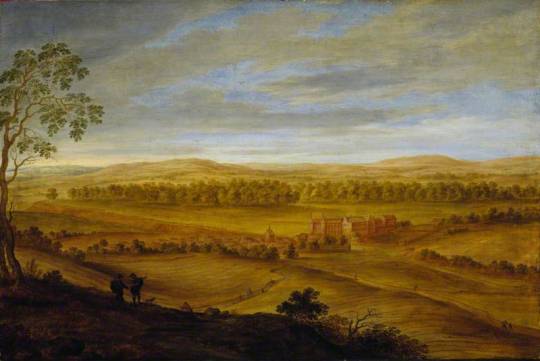
Alexander Keirincx (1600-1652) - Falkland Palace and the Howe of Fife - ca 1639
Height: 45.6 cm (17.9 in) Edit this at Wikidata; Width: 68.6 cm (27 in)
National Galleries of Scotland
Falkland Palace, in Falkland, Fife, Scotland, is a royal palace of the Scottish Kings. Today it is under the stewardship of Ninian Stuart, who delegates most of his duties to The National Trust for Scotland. It is well known as the beloved residence of the Stewart dynasty. It was one of Mary, Queen of Scots' favorite places as it provided an escape from the political and religious turmoil during her reign.
Alexander Keirincx (Antwerp, 23 January 1600 – Amsterdam, 1652) was a Flemish landscape painter who is known for his wooded landscapes with figures as well as his 'portraits' of English castles and country houses. After training in his native Antwerp, he worked in Utrecht and ultimately to Amsterdam in the Dutch Republic. During a period of sojourn in England in the late 1630s he worked on commissions for the English king. He was a regular collaborator of Cornelis van Poelenburch.
Keirincx was a specialist landscape painter who is known for his wooded landscapes with figures and portrayals of English castles and country houses. His career and contributions to art history and especially to the development of painting in Britain have long been obscured by mistaken identity, lack of documentation and variant name spellings. In particular, he has erroneously been identified with the English painter Jacob or Johann Carings or Cierings (c. 1590-1646).
Like his presumed master Abraham Govaerts Keirincx initially specialized in small cabinet-sized forest landscapes in the manner of Jan Brueghel the Elder and Gillis van Coninxloo. Also like Govaerts, Keirincx's early works typically show history, mythological or biblical subjects within a Mannerist three-color, schematic landscape bracketed by repoussoir trees. However, during the 1620s and 1630s his landscapes become increasingly naturalistic, influenced by Dutch tonalism in the manner of Pieter de Molyn, Jan van Goyen and others.
A key event in Keirincx's career was his sojourn in England during which he received a commission of King Charles I of ten landscape paintings. These depicted mainly views of the king's castles and houses in Northern England and Scotland produced between May 1639 and mid-1640. Charles' commission was likely politically motivated, originally intended to celebrate his campaign and victory over the Scots during the first of the Bishops' Wars and when that didn't materialize, a face-saving measure upon the return of his properties by the Scots. One example, Distant View of York at Tate Britain, shows an important site in the campaign of the First Bishops' War. The importance of this series and its impact on later painting in Britain is hard to overstate, as Keirincx combined the aesthetic landscape tradition with that of the taste for detailed, topographical views, firmly grounded in Caroline court culture. His are the first "house portraits" which became a well-established trend in painting in Britain by the later 17th century as practiced for example by Jan Siberechts and Jan Griffier the Elder.
Seventeenth-century artistic practice often relied on collaborations between specialist painters. Keirincx was the most frequent collaborator of the Dutch painter Cornelis van Poelenburgh. While the two artists lived near each other in Utrecht during the period between 1632 and 1636 and in London from 1637 to 1641, their collaboration was not limited to those years. In their collaborations Keirincx usually painted the landscape to which Poelenburgh added the figures. However, in one instance it was Poelenburgh who painted the landscape and figures to which Keirincx added a tree. Fifteen paintings have survived on which they have collaborated, but the artists likely collaborated on more works. Two of the collaborations are signed by both artists, one by Van Poelenburgh only, and most of the others by Keirincx alone. The paintings signed by both artists are the Arcadian landscape with dancing figures (1633, Kunsthalle Bremen) and the Landscape with Callisto (1629, Musée Fabre). Infrared reflectography revealed that in the Forest landscape with figures, van Poelenburgh made some adjustments to the landscape painted first by Keirincx, likely to integrate his figures better into the landscape.
14 notes
·
View notes
Photo

Harbor Scene, Jan Griffier I, ca. 1700, Smithsonian: Cooper Hewitt, Smithsonian Design Museum
Size: 18.8 × 31.9 cm (7 3/8 × 12 9/16 in.)
Medium: Pen and sepia washes on paper
https://collection.cooperhewitt.org/view/objects/asitem/id/58319
2 notes
·
View notes
Photo

"View of London from the Horseferry Pier" Jan I Griffier Oil on wood, - Galleria Sabauda, Turin
7 notes
·
View notes
Photo

Dutch Snow Scene with Skaters Jan Griffier I 1645–1718 Dutch
1 note
·
View note
Photo
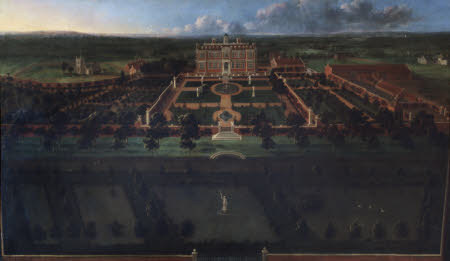



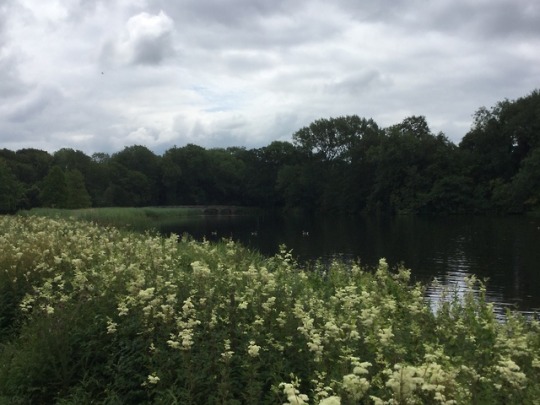



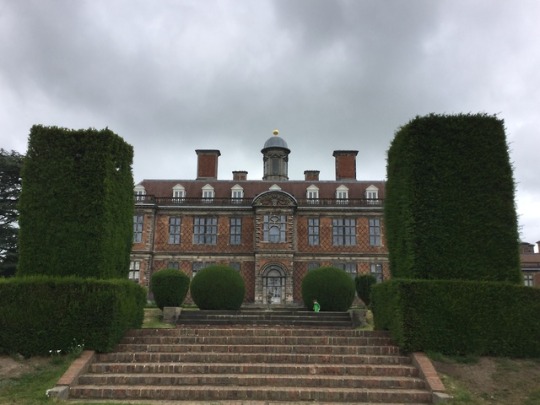
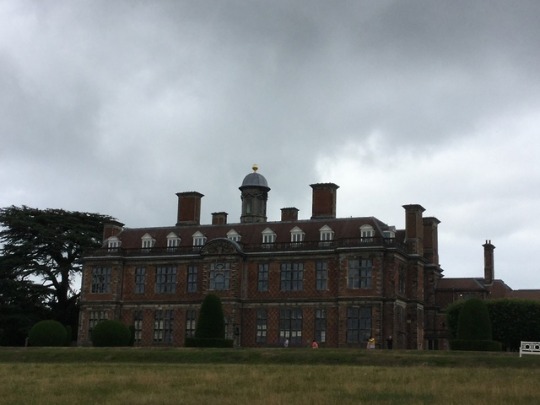
“A profest architecht is proud, opinionative and troublesome, seldome at hand, and a head workman pretending to ye designing part, is full of paultry vulgar contrivances; therefore be your own architecht or sitt still” Roger North, expressing the wisdom of the 17th century.
The Vernons are a family of great antiquity who arrived in England with William de Vernon, who was part of William the Conqueror’s invading army in 1066, and have owned vast tracts of land ever since; they became owners of Sudbury in 1515 when John Vernon, younger son of the family who owned Haddon Hall, married Helen Montgomery, heiress to these lands, though there was no grand hall here in those days.
That was largely the work of the mighty George Vernon (1636-1702), who benefited from a favourable climate, but who did this remarkable work himself, employing no architecht (sharing North’s scorn for the profession) and personally designing the house in which his descendents lived for centuries.
George Vernon, a local landowner and MP from a family of several generations’ standings, decided to build a house to reflect his family’s status and rise; while himself too young to have fought in the Civil Wars, and the son of a Parliamentarian commander, he soon adapted himself to the reign of Charles II, and indeed began his work in 1660, the year in which Charles II took the throne.
During the Exclusion Crisis of 1679-81, and subsequently, his staunch anti-Catholicism led him to oppose the future James II, and while he survived James’ reign (1685-88), he was clearly well placed at the succession of William III and Mary II to put himself forward as a loyalist to the new regime.
Throughout this time, George Vernon avoided trouble and was steadily constructing his house and garden at Sudbury, as in the contemporary account by (1) Jan Griffier from 1690.
Sudbury is a place of change, and George Vernon’s grandson George Venables-Vernon, 1st Baron Vernon(1709-1780), was as active as his grandfather, reforming the original Restoration garden and installing a garden in the naturalistic style of the 18th century; his greatest achievement was the lake that still sits at the bottom of the garden today.
The 5th Baron (1803-1866), also called George Venables-Vernon and also an MP, was a keen landowner and agriculturalist; he took his interest in farming rather too far and tried to drain the lake and grow maize on it, but thankfully abandoned this and instead installed (8) the bridge, which very cleverly looks like it crosses over the water which continues to flow onwards, but is in fact the edge of the lake.
The 5th Baron presided over a boom time for Sudbury, profiting from agricultural rents and mills he owned in Poynton, Cheshire; he employed WS Gilpin and Joseph Paxton, who brought in a more formal Victorian garden which still largely exists today and can be seen here, still lived in by the Vernon family, though they are no longer owners.
Unfortunately these times were not to last; the American Civil War destroyed the profits of the mills, and the 5th Baron had to support the indigent workers who had once prospered by working for him, and by the time his son Augustus Henry became the 6th Baron in 1866, a depression in agriculture had also begun, which was a major factor in the decline and fall of the British aristocracy, about which David Cannadine so memorably wrote.
It became impossible for the Vernons to live in a manner the 17th-century George Vernon would have recognised, and while his son George Venables-Vernon, 7th Baronet, restored the family fortunes temporarily by marrying American heiress Frances Lawrance, this only made it clearer that the traditional revenue streams were running dry.
Upon the death of Francis Lawrance William Venables-Vernon, 9th Lord Vernon, in 1963, Sudbury was transferred to the National Trust in 1967 and restored by a team led by Deborah Cavendish, Duchess of Devonshire (born Deborah Mitford, one of the famous Mitford sisters), James Lees-Milne, Christoper Wall and John Fowler.
Working with the gardeners, indoor staff and volunteers, the restoration has been a tremendous success, as you can see here and from insiide, which will be the subject of the next post.
0 notes
Text
PAR a entregá lei ku por regulá Deurwaarder
Djárason dia 12 di desèmber 2018 último, Frakshon di PAR a hasi entrega na griffier suplente di parlamento di Kòrsou sra. Crezée-Kwidama, e proyekto di lei pa regulá e trabounan di deurwaarder na Kòrsou.
E meta di e proyekto di lei aki ta pa krea un kuadro legal den kua e trabounan di deurwaarder por tuma lugá. Tambe pa garantisá ku e proseso di kobransa di debe, inkluyendo esun di debe di estudio ta kana na un manera efektivo, transparente i konforme lei. I ta eliminá e omishon den nos leinan pa ku e tema aki, basa riba nos derecho di estado.
Entretantu e proyekto di lei di deurwaarder a wòrdu revisá dor di Raad van Advies. E komentarionan di Raad van Advies a wòrdu prosesá dor di e miembronan di e grupo di trabou, bou di guia di Professor Jan de Boer i tambe ku asistensia di señor Luutsen de Vries. Den e lunanan tras di lomba diferente trabounan a tuma lugá, manera entre otro reunionnan ku korte di hustisia; diferente interkambio ku e deurwaardersnan lokal i ekspertonan riba tereno konserní. Resultado di esakinan a wòrdu prosesá den e vershon adaptá di e lei di deurwaarder.
Ku e lei di inisiativa aki ta garantisá ku kada siudadano ta haña un trato hustu na momento di paga nan debenan di estudio i otro.
Riba e fotonan por mira na momento ku e miembronan di frakshon di PAR a hasi entrega di e lei di deurwaarder na sra. Crezée-Kwidama, griffier suplente di Parlamento di Kòrsou, huntu ku e diferente profeshonalnan ku a duna un aporte balioso na realisashon di e proyekto aki.
Ana Maria Pauletta
PAR a entregá lei pa regulá Deurwaarder. PAR a entregá lei ku por regulá Deurwaarder Djárason dia 12 di desèmber 2018 último, Frakshon di PAR a hasi entrega na griffier suplente di parlamento di Kòrsou sra.
0 notes
Photo

The Great Fire of London, 1666
Jan Griffier I (c.1645–1718)
Museum of London
110 notes
·
View notes
Photo

Dutch Snow Scene with Skaters
Jan Griffier I (c.1645–1718)
Merchant Adventurers’ Hall
187 notes
·
View notes
Photo
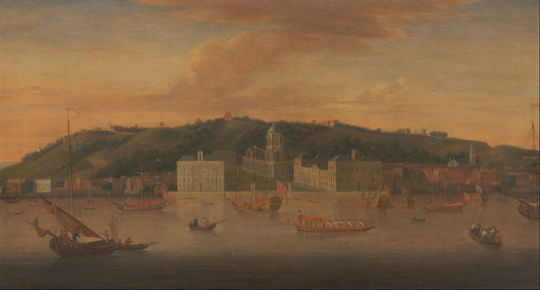
Jan Griffier the Elder - A view of Greenwich from the River with many Boats - 1700-10
Greenwich is an area of south east London, England, located 5.5 miles (8.9 km) east-southeast of Charing Cross. It is located within the Royal Borough of Greenwich, to which it lends its name.
Greenwich is notable for its maritime history and for giving its name to the Greenwich Meridian (0° longitude) and Greenwich Mean Time. The town became the site of a royal palace, the Palace of Placentia from the 15th century, and was the birthplace of many Tudors, including Henry VIII and Elizabeth I. The palace fell into disrepair during the English Civil War and was rebuilt as the Royal Naval Hospital for Sailors by Sir Christopher Wren and his assistant Nicholas Hawksmoor. These buildings became the Royal Naval College in 1873, and they remained an establishment for military education until 1998 when they passed into the hands of the Greenwich Foundation. The historic rooms within these buildings remain open to the public; other buildings are used by University of Greenwich and Trinity Laban Conservatoire of Music and Dance.
The town became a popular resort in the 18th century and many grand houses were built there, such as Vanbrugh Castle (1717) established on Maze Hill, next to the park. From the Georgian period estates of houses were constructed above the town centre. The maritime connections of Greenwich were celebrated in the 20th century, with the siting of the Cutty Sark and Gipsy Moth IV next to the river front, and the National Maritime Museum in the former buildings of the Royal Hospital School in 1934. Greenwich formed part of Kent until 1889 when the County of London was created.
Jan Griffier (ca 1652–1718) was a Dutch Golden Age painter who was active in England, where he was admitted to the London Company of Painter-Stainers in 1677.
9 notes
·
View notes
